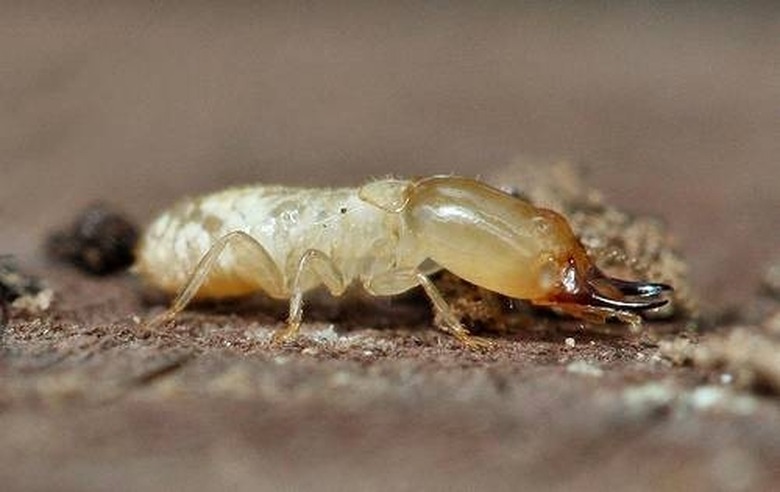How To Treat A Yard For Termites
Termites commonly live below the ground or inside of wood and are difficult to detect. Signs of damage are not immediately visible and damage can occur to a yard or trees without knowing there is an infestation. Some termite colonies have up to one million termites, causing destruction to more homes than any other cause. Termites live in social colonies, similar to ants. The colonies include workers, soldiers and winged reproductives.
Step 1
Remove infested wood. Termites swarm trees, wood piles and other lumber products in the yard. Cover decks and flower pots with paint and sealer. Trees with infestations may have to be removed. Timber piles should always be raised off the ground. Small termite infestations can be controlled by following these steps.
Step 2
Place bait stations throughout the yard and near home infestation sites. The termites will digest the bait and bring it back the colony. The remaining colony of termites will quickly be contaminated with the insecticide. Baits must work slow enough to not kill the initial termites immediately, with effects beginning once the termite returns to the colony. Baits can eradicate entire colonies or suppress them enough to control damage.
Step 3
Inject repellent products to invasion sites. Termites will avoid specific areas, however, they will continue to nest elsewhere. Read directions on all chemicals used, as well as proper safety protection.
Step 4
Notify neighbors and nearby residents of a termite invasion. Many times termites live in several yards on one block and continue to spread. If repellent is used in one yard, the termites may simply move to the yard next door.
Step 5
Understand when professional help is necessary. Termites can invade homes and are the leading cause to damage the wood in residential homes. If there is a large termite population in a lawn, there's a good chance the termites have already invaded a nearby home.
Tip
Ants are natural predators of termites. Do not kill ants that are not causing problems to the yard. Termite mounds are not found by species present in North America, yet are common in Africa.
